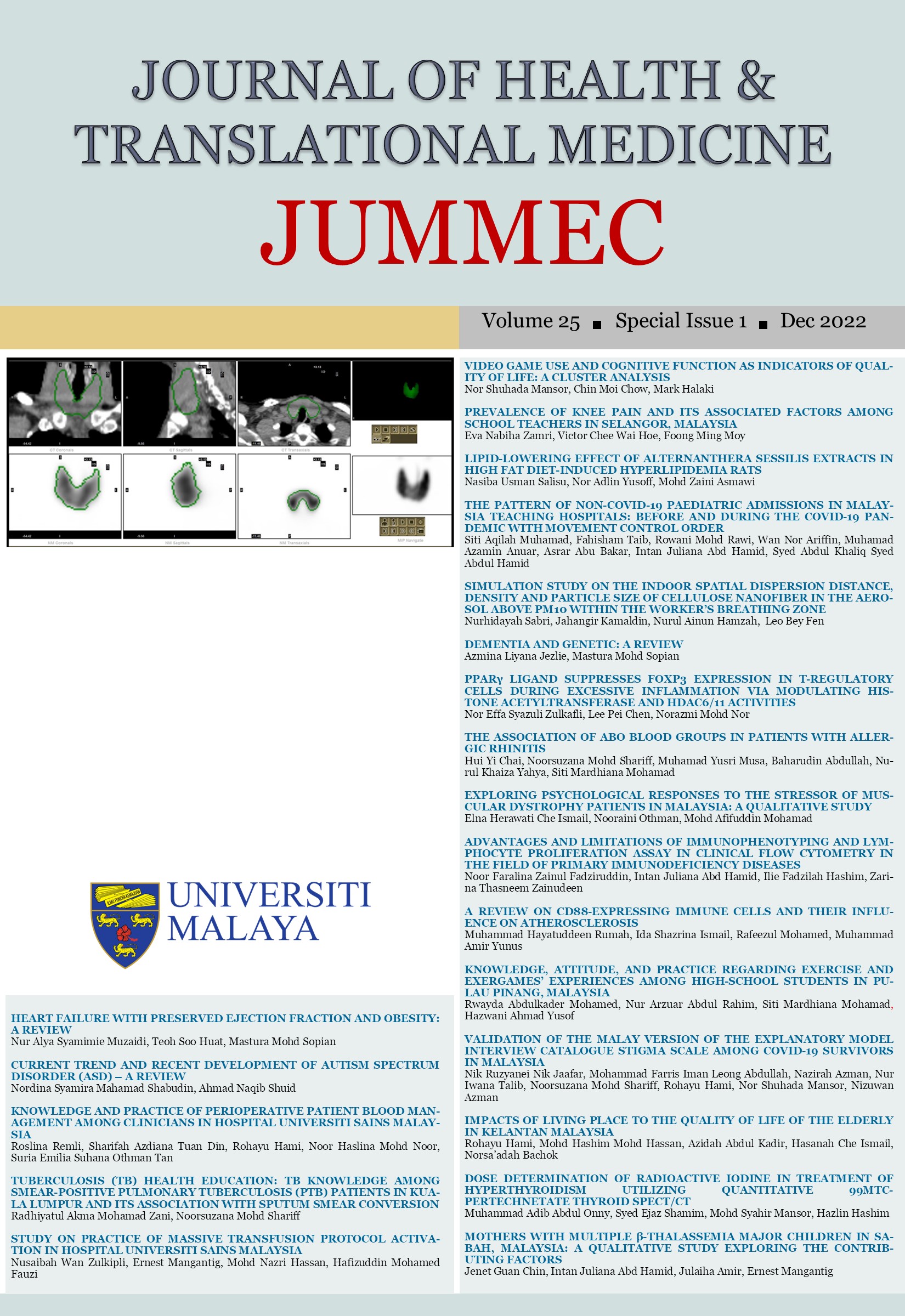IMPACTS OF LIVING PLACE TO THE QUALITY OF LIFE OF THE ELDERLY IN KELANTAN MALAYSIA
Received 2022-03-19; Accepted 2022-10-23; Published 2022-12-31
DOI:
https://doi.org/10.22452/jummec.sp2022no1.14Abstract
The Malaysian population is aging, and the elderly are less healthy than the young. The majority of the elderly remain in their own home, although some choose to live in a pondok and others are institutionalized. The main concern in the care of the elderly is maintaining the quality of life (QOL) up to the last moment. The aim of this study is to determine the effect of living place (home, pondok, or old folks’ home) on QOL of the elderly in Kelantan, Malaysia. Four-hundred seventy-one respondents participated in this cross-sectional study. Participants age 60 years old and above were selected conveniently and the WHOQOL-BREF questionnaire was administered by face to face interview to measure quality of life. Multivariate analysis of variance was applied to detect the impacts and p-value < 0.05 was considered significant. Significant differences in mean score of physical (p = 0.011), psychological (p < 0.001), social (p < 0.001), and environmental (p = 0.001) aspects of QOL were detected among participants living at home, in a pondok, and in an old folks’ home. The elderly living in their own home had the highest scores in the physical, social, and environmental domains. Those living in a pondok scored highest in the psychological domain. The elderly living in an old folks’ home had the lowest scores in all domains. A significant effect of living place on QOL of the elderly was detected (p < 0.001) and there was a significant effect of living place on QOL after medical illness and age were controlled (p < 0.001,). Conclusion: Living place had a significant effect on QOL of the elderly, with best QOL for own home living elderly. We recommend elderly should remain in their own home till the end of their life.
Downloads
Downloads
Published
Issue
Section
License
All authors agree that the article, if editorially accepted for publication, shall be licensed under the Creative Commons Attribution License 4.0 to allow others to freely access, copy and use research provided the author is correctly attributed, unless otherwise stated. All articles are available online without charge or other barriers to access. However, anyone wishing to reproduce large quantities of an article (250+) should inform the publisher. Any opinion expressed in the articles are those of the authors and do not reflect that of the University of Malaya, 50603 Kuala Lumpur, Malaysia.


